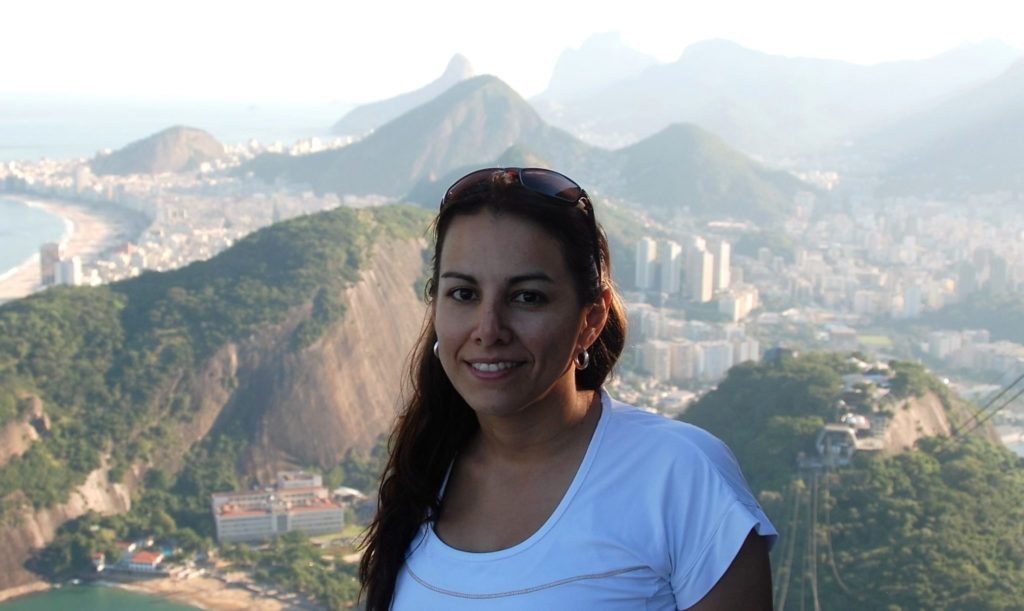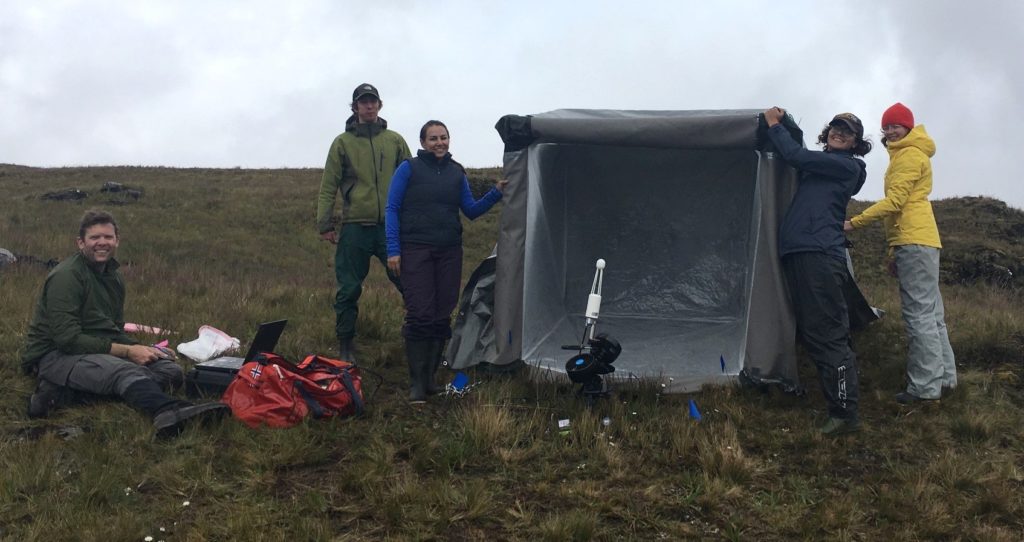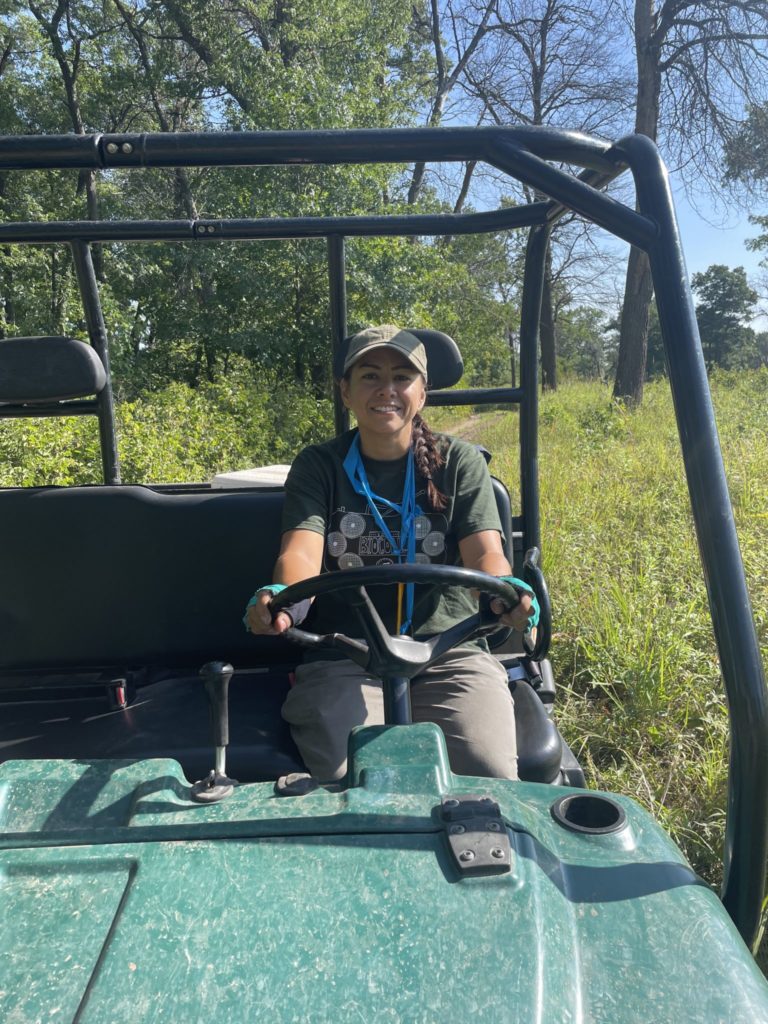
Dr. Sandra Durán is an assistant professor of Geospatial Analysis of Forest and Rangeland Systems in the Department of Forest of Rangeland Stewardship. Learn more about why she came to Colorado State University, her research areas and teaching philosophy, and why she first visited CSU in 2005.
Q: Tell us a bit about yourself!
A: I am a field ecologist by training, interested in understanding how plant biodiversity changes across space and time, and how these changes impact ecosystem properties. I grew up in Colombia, and thus I have always been fascinated by the high biodiversity of tropical forests, as such much of my research has been conducted in the tropics. However, quantifying biodiversity in these hotspots at large scales continues to be challenging, so during my postdoc at the University of Arizona, I combined field-based measurements with airborne remote sensing to quantify diversity and evaluate whether these remotely sensed biodiversity metrics could predict ecosystem properties. I found that this integration is enabling us to evaluate the effects of biodiversity on ecosystem processes such as carbon capture in tropical forests. Since then, I’ve continued to work on integrating field observations with remote sensing to improve our understanding of the consequences of biodiversity change on terrestrial ecosystem function.
Outside of work, I love biking of all kinds: road, gravel, and mountain biking. Luckily, I have lived in wonderful cities for biking including Tucson and Minneapolis and I will soon be in Fort Collins.

Q: What brought you to Forest and Rangeland Stewardship and CSU?
A: I was looking for a tenure-track position in an interdisciplinary department, and I was very excited to see the open position integrating remote sensing, GIS and natural resource management. I like that the FRS Department focuses on training students for applied positions besides academia. Also, I really like Colorado, and had the opportunity to visit the state during the summer of 2018 and 2019 doing field work near the Rocky Mountain Biological Lab. A fun fact is that Fort Collins was the first city I visited when I came to the U.S. for the first time in 2005 to participate in a course on wildlands and protected areas taught in Spanish by the Warner College of Natural Resources.
Q: What are your research and teaching interests and how did you get interested in those topics?
A: My research interests focus on the effects of plant biodiversity on ecosystem properties such as carbon, water, and nutrient cycling. I became interested in these topics based on my previous research, but also because we are losing biodiversity at an unprecedented rate and we are still unclear about the consequences of this loss on the functioning of natural systems.
In terms of teaching, I like teaching subjects related to functional ecology, the role of organisms in ecosystems, and the use of remote sensing or GIS to answer ecological questions. The courses related to GIS and remote sensing are particularly useful to convey the importance of the integration of methods and approaches from different fields. I think we need more cross-disciplinary teaching and research to cope with current environmental challenges.
Q: What is a research question you are working on or curious about next?
A: Most of my research assessing the relationship between plant trait diversity and ecosystem properties has been a snapshot study. But if I aim to understand the consequences of biodiversity change, I need to evaluate how the diversity-function relationship changes across time and test this in different ecosystem types. I’ll assess, for example, whether we continue to find positive relationships to functions like carbon gain as we do in experimental studies or in “snapshot” studies, how the scale affects this relationship, and in which ecosystems biodiversity is relatively more important than changes in environmental conditions. I think my future research will be along these lines in order to fill out the gaps in research we have in natural systems, as most of the research on the role of biodiversity is conducted in experimental settings.
Q: What classes will you be teaching and when?
A: I will be teaching NR319 — Geospatial Application in Natural Resources– in January 2023. I understand there is a high interest in GIS across the college, so I look forward to knowing the students from NR319 and learning about their different interests in using GIS.

Q: What is your teaching philosophy?
A: As a teacher, my main goal is to convey to students the importance of critical thinking and help students to develop as scientists and long-life learners. To achieve this goal my teaching philosophy centers on four ideas: 1) encourage enthusiasm and interest in the material, 2) provide students with choices to direct their learning, 3) provide hands-on experience whenever possible, and 4) incorporate technology. For NR319, I will bring my research experience to the classroom by introducing students to the applications of GIS and other technologies for ecological studies.
Q: What do you like about CSU and the campus?
A: I do not know the CSU campus well yet, but during my interview, I thought the oval and its elm trees were beautiful. It was cool to learn that some of these trees are over 100 years old.
Q: You are currently recruiting for your lab, correct?
A: Yes, I am currently receiving applications for a fully funded Ph.D. position on linking biodiversity observations with remote sensing to predict ecosystem function. The full posting can be found here.
Q: How should folks contact you?
A: I can be reached at Sandra.Duran@colostate.edu. Interested students are welcome to visit the lab website to learn about research themes and current projects.